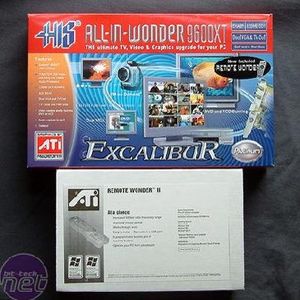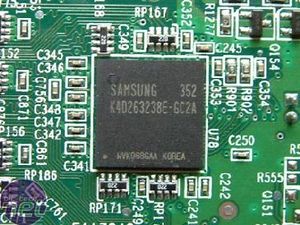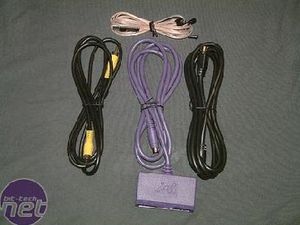There are two boxes included in the package - one contains the graphics card and the bundled cables and software, while the other contains everything that's to do with Remote Wonder II. We'll take a look at Remote Wonder II in a little while. Inside the box there's a collection of software including a Catalyst driver CD, Ulead VideoStudio 7 SE, 3D Album - an application that allows you to make 3D animated albums with your digital photos, Arx Fatalis - full version of the game. Finally there's a Games Collection CD containing 5 demos of the following games: Vietcong, Railroad Pioneer, Neighbors From Hell, Tropico 2: Pirate Cove and Aquanox 2.


The board design is very similar to the All-In-Wonder 9600 PRO, with the only real visual difference being the heatsink design. The heatsink, which is made of copper, looks to cover the memory but this is not the case - the memory on the top of the card isn't cooled by the heatsink as there's no connection between the two. Noise wise, the card is very quiet - the fan cannot be heard above normal case and background noise.
Since the memory on this board runs at 325MHz, it is effectively under-clocked, as it is in fact
rated to 350MHz (700MHz DDR). The most likely reason for this is to help keep heat emission down, but it could be also be used to enhance the products appeal for the keen overclocker.
There's a large array of cables included in the bundle, there's an S-Video cable, a Composite cable, an FM aerial and an Audio/Video-In breakout box that allows for S-Video or Composite signals to be imported on to your computer. The FM aerial and Audio/Video-In breakout box connect directly to the boards' back plate, while the S-Video and Composite cables either connect to the A/V-In box or to another rather interesting cable that is detailed over the page.













Want to comment? Please log in.